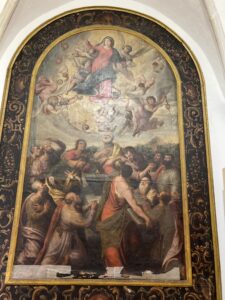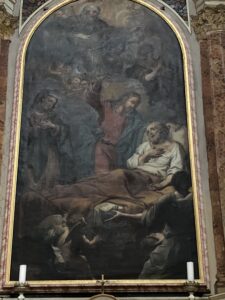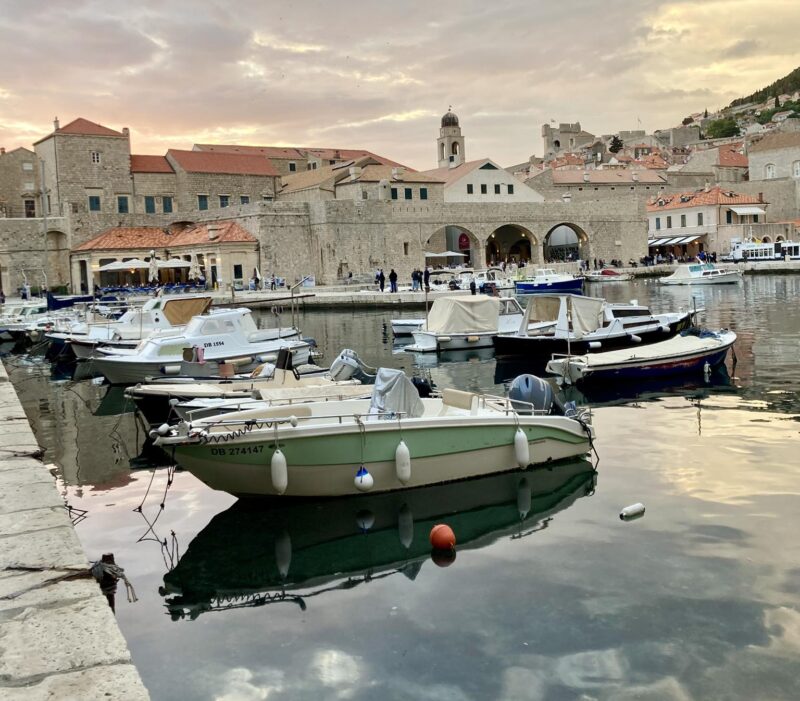My Regensburg Year Part 9: April 2025
For most of this month we stayed close to home, satisfying our wanderlust with some small bus trips to nearby Kallmünz and Donaustauf. The two towns are quite similar: they are built around an acropolis with castle ruins and are surprisingly quiet on a balmy Saturday afternoon. Our time there was spent mostly climbing up to check out the ruins.

Our major destination in April was Dubrovnik (Croatia), a location chosen by my wife as a birthday treat. We stayed in the old city, which was gorgeous and impeccably clean. It reminded me of Mdina in Malta but with things to do! The city was constructed by filling in a horseshoe of rocky area at the base of a mountain. So each side of the city has streets of stairs meeting in the flat centre. One tour guide told us of having to help his cousin with a new fridge, taking it down one side of the town and up the other. They no longer speak. We spent our time in the city visiting museums, churches, and palaces (the usual) and took a few tours: one in kayaks around the city and to a nearby island, one on a boat to three other islands, and one on a bus to Mostar in Bosnia and Herzegovina (not recommended: the town is everything Dubrovnik was not, including interesting, and the wait at the border was interminable). In sum, it was one of the highlights of our time in Europe.
I mentioned in my post for March that I would be shifting my work on the AYBRL book to a chapter on revelation discourses. Instead I began working on the first chapter. This features your standard introductory materials: a definition of apocrypha, discussion of canon formation, and history of scholarship. It is so standard that the boredom of writing it can only be surpassed by the boredom of having to read it. I’ve also written this kind of thing before, both in my short introduction to apocrypha Secret Scriptures Revealed and in the introduction to volume 1 of New Testament Apocrypha: More Noncanonical Scriptures. I needed to find a new angle and settled on telling a chronological history of the composition, transmission, and publishing of Christian apocrypha.

The chapter begins in the first century with a discussion of possible sources for the New Testament Gospels (Q and the Johannine Signs Source) and apocrypha that may have been composed at that time (Gospel of Thomas, Gospel of the Hebrews). Then it moves through second-century compositions and the role of the heresy hunters in preserving texts of their opponents (squeezing in discussions of the Apostolic Fathers, Christian Old Testament pseudepigrapha, and Gnosticism, along with a definition of apocrypha, now that it is being used both in the titles of texts and pejoratively by the heresy hunters for texts they find objectionable), fourth century canon formation (with descriptions of canon lists), the transition into hagiographical writings (which draw upon and create new apocryphal traditions), medieval and Byzantine texts (new apocryphal acts and apocalypses; texts written in reaction to Islam), the beginnings of print in the West (from incunables to the collection of apocrypha by Johann Fabricius), early modern publishing (critical editions based on careful comparison of manuscripts), to the twentieth and twenty-first centuries, with the creation and study of modern apocrypha, the redefining of apocrypha that leads to expansive scholarly collections, apocryphal traditions used in popular culture, and the forming of academic societies. The introduction will also feature a section on the sources of apocrypha (manuscript discoveries and the relationships between their various languages). I think the approach works but we will see how well once I have finished writing it.
How long will that take? Well, May promises to be a busy month with trips to Athens and Crete, to Chicago for a presentation at NAPS, and to Oslo for a presentation at Hugo Lundhaug’s Storyworlds in Transition project. It’s a good thing I can work on planes and trains.

